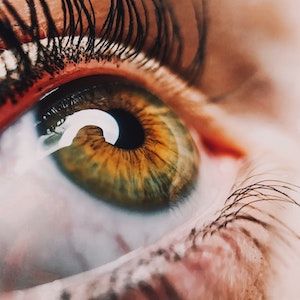Commentary
Video
Single-dose faricimab in treatment-experiences eyes with nARMD: Case 1
Author(s):
Moritz Pettenkofer, MD, discusses the mechanisms of faricimab and presents a case study of a 66-year-old female with nARMD
Transcript
Moritz Pettenkofer, MD: It's always challenging to translate clinical trial results into clinical practice. So, we thought it would be a good idea to collect our own results of treatment experience patients. With treatment experience patients, we're really talking about four weekly intervals here in these patients over a longer period of time. I would like to share with you our tiny experience after a single dose of faricimab in treatment-experienced eyes with neovascular-atrial macular degeneration. I have no financial disclosures to report. Here's a little overview of the drug mechanism. Faricimab binds and neutralizes both VEGF and angiopoietin 2. The angiopoietin 2 portion of the drug in this one molecule is supposed to enhance the vessel stabilization, whereas the anti-VEGF portion that we are already very familiar with inhibits vascular leakage and the neovascularization. There's also a third portion in this molecule that is supposed to reduce the systemic exposure and to reduce inflammatory potential.
I would like to start with this first case presentation. In a retinal clinic, we probably have all seen a patient like her before. This patient, a 66-year-old female patient with neovascular-atrial macular degeneration in both eyes, here shown in the left eye, has a very, very impressive history of 119 anti-VEGF injections in the right eye and 118 in the left eye that we can see here in the pictures since 2013. In the left eye, she was always ranging from 20/60 to 20/80 in the 24 months prior to faricimab, that was also the length that we particularly looked at in our little study. As we can see here, she was always showing persistent fluid despite the four-weekly treatment. We decided when Vabysmo came out last year that we want to switch her to that drug. In August last year, we injected the left eye, then we took an OCT picture months later. It was very impressive to see that for the first time since 2013, the intradermal fluid, subretinal fluid, completely went away after only one month. When we look at her fellow eye, the right eye, which has always been her left eye, ranging from 20/60 to 20/30 in the 24 months prior to the switch. It was a very, very similar experience for this patient. She always had persistent intradermal fluid. And we can also see the PED. The PED did not go away by the Faricimab. She has been on all three agents, initially Avastin and then over a longer period of time, Eylea. And then before we switched her, she was on Lucentis. On Lucentis, the PED went away, but not the fluid. But then we did the same thing. We injected her and a month later, the fluid went away completely, which was very, very impressive anatomical results here.
Here I would like to draw the attention, in this same patient, on the timeline after we injected faricimab for the first time. We have both eyes here, right eye, left eye. Here we can see on the upper frames that these pictures prior to faricimab, visual acuity was 20/30 and 20/60 respectively. Then after four weeks, these very impressive changes, there was no fluid anymore. And visual acuity, I would say as expected, remained the same after only four weeks. And then after six, four-weekly injections, the visual acuity actually also improved. She got a little bit better in 20/25 in the right eye. She could actually tell that her visual acuity was improving. She was really happy about it. She came into our clinic, and she said, "Well, guys, this drug is amazing. This is really finally working for me." And she was doing better, also measurably. She was doing 20/25 and 20/40 in the left eye. We decided to extend her treatment interval here. In the right eye, she remained very stable 20/25. However, in the left eye, visual acuity remained stable. But after a six-week extension, the fluid came back. She's certainly a patient that is very compliant, but she was always showing a lot of fluid. So it's very, very hard to get rid of fluid. And apparently, she did not tolerate the six-week interval of Vabysmo. I think it's just something that we should keep in mind when we have all these longer treatment intervals that the Vabysmo was certainly promising, and we can also see in a lot of patients, it does not apply for each and every one, right? So this is really, we really have to customize our treatments here, and we have to be careful with extensions, in my opinion.
Transcript is AI-generated and edited for clarity and readability.





